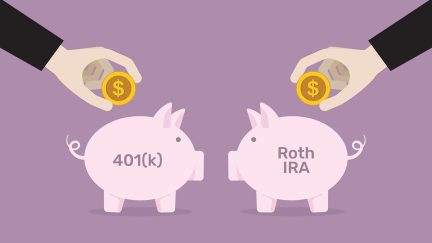For more stories like this, sign up for the PLANADVISERdash daily newsletter.
IRS Provides Tax Relief for Hawaii Wildfire Victims
Victims of the wildfires on the islands of Maui and Hawaii are eligible for Internal Revenue Service tax relief, including waiving the penalty fee for hardship withdrawals.
 As many victims of the recent Hawaii wildfires have lost homes, loved ones and are now faced with significant financial hardship, the Internal Revenue Service announced Friday expansive tax relief for victims in Maui and Hawaii counties.
As many victims of the recent Hawaii wildfires have lost homes, loved ones and are now faced with significant financial hardship, the Internal Revenue Service announced Friday expansive tax relief for victims in Maui and Hawaii counties.
Affected taxpaying individuals and businesses have until February 15, 2024 (with original deadlines from August 8, 2023, through February 15, 2024), to file various federal individual and business tax returns and make tax payments.
Additional relief may also be available to affected taxpayers who participate in a retirement plan or an individual retirement arrangement. Specifically, a taxpayer may be eligible to take a special disaster distribution that would not be subject to the 10% early distribution tax and allows the taxpayer to spread the income over three years, according to the IRS.
If the taxpayer’s plan allows for hardship withdrawals, the 10% early withdrawal penalty would be waived, but the participant would still have to claim the withdrawal as income on their taxes for the year. Each plan or IRA has specific rules and guidance that participants must follow.
Additionally, penalties for the failure to make payroll and excise tax deposits due between August 8 and September 7 will be abated, as long as the deposits are made by September 7, the IRS stated.
The IRS automatically provides filing and penalty relief to any taxpayer with an IRS address of record located in the disaster area, applying to the entire islands of Maui and Hawaii. These taxpayers do not need to contact the agency to get this relief.
But it is possible an affected taxpayer may not have an IRS address of record located in the disaster area, such as if they moved to the disaster area after filing their return. In these circumstances, the affected taxpayer could receive a late filing or late payment penalty notice from the IRS for the postponement period. In that case, the taxpayer should call the number on the notice to have the penalty abated.
Individuals and business in a federally declared disaster area who suffered uninsured or unreimbursed disaster-related losses can also choose to claim them on either the return for the year the loss occurred (in this instance, the 2023 return normally filed next year), or the return for the prior year (2022). Taxpayers have up to six months after the due date of their federal income tax return for the disaster year to make the election.
Qualified disaster relief payments are generally excluded from gross income, according to the IRS.
“In general, this means that affected taxpayers can exclude from their gross income amounts received from a government agency for reasonable and necessary personal, family, living or funeral expenses, as well as for the repair or rehabilitation of their home, or for the repair or replacement of its contents,” the IRS stated.
The tax relief is part of a coordinated federal response to the damage caused by the wildfires and is based on local damage assessments by the Federal Emergency Management Agency.
At least 114 people have died in the western Maui wildfires, with about 850 still unaccounted for. According to Hawaii Governor Josh Green, about 2,200 structures have been destroyed or damaged as a result of the fires, and 86% of these structures are residential. The estimated cost of the damage is around $6 billion.
The IRS Disaster Assistance and Emergency Relief for Individuals and Businesses page has details about other returns, payments and tax-related actions qualifying for relief during the postponement period.
You Might Also Like:

The 2026 ‘Employer’s Guide to Fringe Benefits’ Is Now Available

IRS Issues Covered Compensation Tables for 2026 Plan Year

Recordkeepers Prepare for 2026’s ‘Roth-Only’ Catch-Up
« With Roth Use Set to Grow, Vanguard Stresses Participant Education